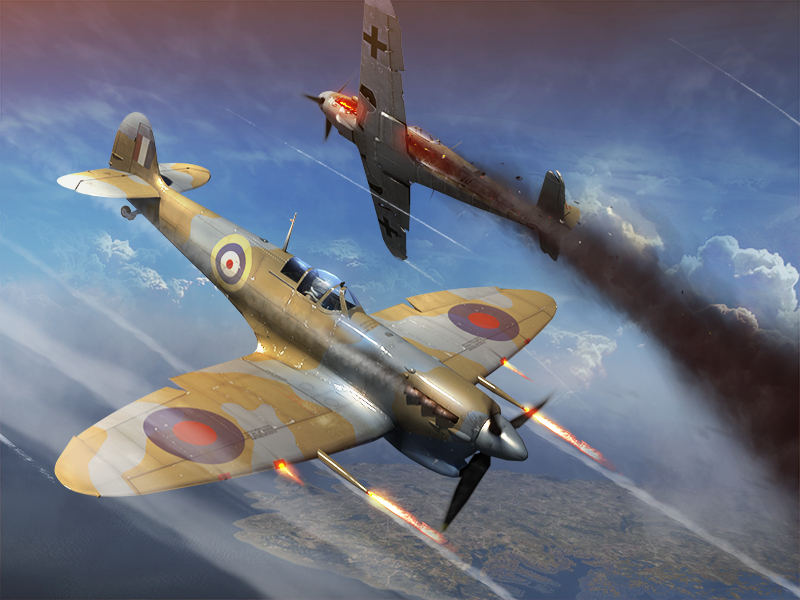
- For PC
- For MAC
- For Linux
- OS: Windows 10 (64 bit)
- Processor: Dual-Core 2.2 GHz
- Memory: 4GB
- Video Card: DirectX 11 level video card: AMD Radeon 77XX / NVIDIA GeForce GTX 660. The minimum supported resolution for the game is 720p.
- Network: Broadband Internet connection
- Hard Drive: 23.1 GB (Minimal client)
- OS: Windows 10/11 (64 bit)
- Processor: Intel Core i5 or Ryzen 5 3600 and better
- Memory: 16 GB and more
- Video Card: DirectX 11 level video card or higher and drivers: Nvidia GeForce 1060 and higher, Radeon RX 570 and higher
- Network: Broadband Internet connection
- Hard Drive: 75.9 GB (Full client)
- OS: Mac OS Big Sur 11.0 or newer
- Processor: Core i5, minimum 2.2GHz (Intel Xeon is not supported)
- Memory: 6 GB
- Video Card: Intel Iris Pro 5200 (Mac), or analog from AMD/Nvidia for Mac. Minimum supported resolution for the game is 720p with Metal support.
- Network: Broadband Internet connection
- Hard Drive: 22.1 GB (Minimal client)
- OS: Mac OS Big Sur 11.0 or newer
- Processor: Core i7 (Intel Xeon is not supported)
- Memory: 8 GB
- Video Card: Radeon Vega II or higher with Metal support.
- Network: Broadband Internet connection
- Hard Drive: 62.2 GB (Full client)
- OS: Most modern 64bit Linux distributions
- Processor: Dual-Core 2.4 GHz
- Memory: 4 GB
- Video Card: NVIDIA 660 with latest proprietary drivers (not older than 6 months) / similar AMD with latest proprietary drivers (not older than 6 months; the minimum supported resolution for the game is 720p) with Vulkan support.
- Network: Broadband Internet connection
- Hard Drive: 22.1 GB (Minimal client)
- OS: Ubuntu 20.04 64bit
- Processor: Intel Core i7
- Memory: 16 GB
- Video Card: NVIDIA 1060 with latest proprietary drivers (not older than 6 months) / similar AMD (Radeon RX 570) with latest proprietary drivers (not older than 6 months) with Vulkan support.
- Network: Broadband Internet connection
- Hard Drive: 62.2 GB (Full client)

From 14:00 GMT on the 5th of March 2014 until 14:00 GMT on the 6th of March 2014
30% discount on all Spitfires
In 1930 the Air Ministry in Great Britain asked for a day and night fighter to replace existing outdated fighters that were in service with the RAF. The basic requirements were: low landing speed, short landing run, a maximum speed of 250mph, a steep initial climb rate for interception, high manoeuvrability and good all round viewing for the pilot.
RJ Mitchell was given the opportunity to start creating the fighter he had in mind for some considerable time.
The Supermarine Type 224 was born in February 1934 ready for its first flight. Drawing on his experience with the Schneider Trophy winning S6B seaplane, Mitchell's design was for a narrow, streamlined fuselage monoplane with open cockpit and to be powered by a 600hp Roll-Royce Goshawk II engine. The aircraft was unofficially christened Spitfire by Sir Robert McLean.
Official testing of all the F.7/30 entries took place at Martlesham Heath in early 1934. Neither the Supermarine Type 224, or any of the other submissions were accepted and the contract was awarded for a Gloster Gladiator biplane under a different specification.
Throughout 1935 Reginald Joseph Mitchell and his team worked on the Type 300 fighter. Mitchell made many innovative changes to his original design. Detailed discussions with his aerodynamicist, Beverley Shenstone led to many new features, the wing shape was changed to the famous elliptical configuration. It was also designed to be thin toward the tip but thick enough at the root to accommodate the retracted undercarriage and machine guns. The wing had an induced twist built into it which proved to be valuable to it’s pilots, giving excellent warning of a potential stall.
This new aircraft was to be powered by a new Rolls-Royce engine, the PV.12 (PV standing for private venture). Through development in cooling the PV.12 eventually emerged as the famous Merlin engine. It was destined to play a prominent role in the Second World War powering Spitfires, Hurricanes, Lancasters and many other aircraft, and its deep-throated roar became a familiar sound.
By the beginning of 1936 the prototype Type 300, bearing the serial number K5054, was ready for its first test flight. Once again Sir Robert insisted it should be called the Spitfire, a name that did not meet with general approval at Supermarine. Mitchell is said to have said that it was:
"Bloody silly to call it by the same name as a previous failure".
K5054
On the afternoon of 5th March 1936 it flew for the first time piloted by Vickers chief test pilot, Capt. J. 'Mutt' Summers. Upon landing 'Mutt' is famously quoted as saying:
"I don't want anything touched".
No major problems were identified, the Spitfire had made a successful first flight.
The prototype Spitfire achieved a maximum speed of 349mph (increased to 364mph in the first production Mk Is), had excellent manoeuvrability, rate of climb and a superb turning circle. Pilots were to describe the ease of its control in the air as almost flying itself.
On 4th September 1939, the day after war broke out, the original prototype crash landed due to an error on the part of the pilot, Flt Lt 'Spinner' White. Sadly he was killed and K5054 never flew again.
.JPG)



